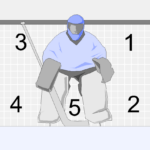
I. Understanding the Furniture Upcycling Market
II. Steps to Start Your Upcycling Business
III. Marketing Your Upcycled Furniture Products
Understanding the Furniture Upcycling Market
Hey there! Have you ever looked at an old piece of furniture and thought, “I could totally do something amazing with that”? If so, you’re not alone! The furniture upcycling market has been gaining momentum, captivating the hearts (and wallets) of eco-conscious consumers and creative DIY enthusiasts alike. Let’s dive into this exciting world, shall we?
What is Furniture Upcycling?
First things first, let’s clarify what we mean by upcycling. Essentially, upcycling is a sustainable practice that involves taking discarded or outdated furniture and transforming it into something new and functional. It’s all about giving new life to items that might otherwise end up in a landfill. Not only does it help reduce waste, but it also allows for a unique creative outlet!
Market Trends You Should Know
The furniture upcycling market is booming, and there are several trends driving its growth:
- Eco-friendly Practices: With increasing awareness about environmental issues, many consumers are seeking sustainable options. Upcycled furniture often appeals to those who want to minimize their carbon footprint.
- One-of-a-Kind Pieces: In a world where mass-produced items dominate, unique upcycled furniture stands out. Shoppers love the idea of owning something that’s truly one-of-a-kind.
- DIY Culture: The rise of social media platforms like Instagram and Pinterest has fueled a DIY culture, inspiring many to take on their own upcycling projects.
- Affordability: Upcycled furniture can often be more affordable than brand-new pieces, making it an attractive option for budget-conscious consumers.
Who Is Your Audience?
Understanding who you’re creating for is key to finding success in the upcycling market. Your audience could include:
- Eco-conscious Consumers: These individuals prioritize sustainability and prefer to invest in products that are environmentally friendly.
- DIY Enthusiasts: Many creative souls are looking for unique pieces they can personalize or restore themselves.
- Home Decor Lovers: People who enjoy decorating their spaces will be drawn to the charm and character of upcycled furniture.
- Budget Shoppers: Those looking to furnish their homes without breaking the bank may find upcycled options appealing.
Challenges in the Market
While the furniture upcycling market offers exciting possibilities, it’s not without its challenges. Here are a few to keep in mind:
- Quality Control: Not all upcycled pieces will meet the same quality standards, so it’s essential to ensure that your products are durable and well-made.
- Market Competition: As more people discover the joys of upcycling, competition is growing. Standing out in a crowded market can be tricky!
- Consumer Education: Some potential buyers may not fully understand the value of upcycled furniture. Educating them on the benefits can be vital.
In conclusion, the furniture upcycling market is a vibrant and growing space that combines creativity with sustainability. By tapping into current trends and understanding your target audience, you can carve out a niche for yourself in this exciting field. So, grab that old chair and let your imagination take flight—you never know what beautiful transformation awaits!
Steps to Start Your Upcycling Business
So, you’re ready to dive into the world of upcycled furniture? That’s fantastic! Upcycling is not only a creative outlet but also a sustainable business model. Let’s break down the steps to get your upcycling business off the ground in a way that feels approachable and fun.
1. Find Your Niche
First things first, think about what excites you! Upcycling can involve anything from transforming old chairs into stylish garden benches to turning distressed wood into chic coffee tables. Here are some questions to consider:
- What materials do you enjoy working with?
- Do you have a specific style in mind, like rustic, modern, or vintage?
- What type of furniture do you feel most passionate about?
Your niche will guide your design choices and help you stand out in a crowded market. Remember, passion is contagious, and when you love what you do, it shows in your work!
2. Gather Your Tools and Supplies
Next, you’ll need to equip yourself with the right tools and materials. Here’s a basic list to get you started:
- Basic hand tools (screwdrivers, hammers, etc.)
- Power tools (saw, drill, sander)
- Sandpaper and paintbrushes
- Wood glue and screws
- Paint or stain, depending on your aesthetic
Consider checking local thrift shops, garage sales, or online marketplaces for furniture pieces that need a little TLC. You might find some hidden gems just waiting to be transformed!
3. Develop Your Skills
If you’re new to furniture upcycling, don’t worry! There are plenty of resources available to help you learn. Here are a few options:
- Online Tutorials: Websites like YouTube have countless videos that demonstrate various techniques.
- Workshops: Look for local workshops or classes where you can learn hands-on skills.
- Books and Blogs: There’s a wealth of literature dedicated to upcycling that can provide inspiration and guidance.
Practice is key! Start with smaller projects to build your confidence before tackling larger pieces.
4. Create a Business Plan
Now that you feel equipped and inspired, it’s time to think about the business side. A simple business plan can help you outline your goals, target market, budget, and marketing strategies. Consider the following:
- Market Research: Who are your potential customers? What are their preferences?
- Pricing: Research what similar items are selling for to set competitive prices.
- Budget: Keep track of your expenses to ensure your profitability.
Having a clear plan will help you stay focused and organized as you launch your business.
5. Start Creating!
Finally, the most thrilling part—get to work! Let your imagination run wild as you transform old furniture into stunning, unique pieces. Enjoy the creative process and don’t be afraid to experiment. Each project you complete will not only build your portfolio but also boost your confidence.
Starting an upcycling business can be an immensely rewarding journey. With a little creativity, some elbow grease, and a sprinkle of patience, you’ll be well on your way to sharing your beautiful creations with the world!
Marketing Your Upcycled Furniture Products
So, you’ve transformed that old dresser into a stunning piece of art, and now you’re wondering how to share your creative genius with the world. Marketing your upcycled furniture products is the key to not just selling pieces, but also telling your story and connecting with people who appreciate your craftsmanship. Let’s dive into some effective strategies to get your upcycled creations the attention they deserve!
1. Know Your Audience
Before you jump into marketing, take a moment to understand your target audience. Who are the people that would love your upcycled furniture? Are they eco-conscious consumers, interior design aficionados, or perhaps families looking for unique pieces? Knowing your audience will help tailor your marketing efforts.
2. Create a Stunning Online Presence
Your online presence is your digital storefront. Here’s how you can make it pop:
- Website: Build a clean, user-friendly website showcasing your products. High-quality images from multiple angles will help potential buyers visualize their new furniture in their homes.
- Social Media: Platforms like Instagram and Pinterest are perfect for visual businesses. Share before-and-after photos, DIY tips, and behind-the-scenes stories of your upcycling process.
- Content Marketing: Start a blog! Share articles about upcycling, sustainable living, or even the history behind the furniture styles you’re working with. This positions you as an expert and helps attract potential customers.
3. Leverage Local Markets
There’s something special about local connections. Here’s how to tap into your community:
- Flea Markets and Craft Fairs: Set up a booth at local markets to showcase your furniture. This gives customers a chance to see the quality of your work in person.
- Partnerships: Collaborate with local businesses such as interior design shops or eco-friendly stores to display your pieces. Cross-promotion can bring in new customers for both parties.
- Workshops: Host workshops where you teach others how to upcycle furniture. This not only showcases your expertise but can also create a community of upcycling enthusiasts.
4. Utilize Online Marketplaces
Don’t forget about the power of online marketplaces!
- Platforms like Etsy: This is a haven for handcrafted and unique items. Make sure to optimize your listings with keywords that potential buyers might search for.
- Facebook Marketplace and Craigslist: These platforms can help you reach local buyers looking for furniture without the shipping hassle.
5. Engage with Your Audience
Building relationships with your customers is essential. Here are a few tips:
- Respond Promptly: If someone comments on your social media or asks a question, respond quickly. It shows you care!
- Newsletter: Start a newsletter to keep your audience updated on new products, sales, and upcycling tips. It’s a great way to keep your brand top-of-mind.
- Customer Feedback: Encourage happy customers to leave reviews or share photos of their purchased items. Social proof can greatly influence potential buyers.
Marketing your upcycled furniture products doesn’t have to be daunting. By understanding your audience, building a solid online presence, engaging locally, utilizing online platforms, and fostering relationships, you’ll be well on your way to creating a buzz around your beautiful, sustainable creations. Happy upcycling!










Comments